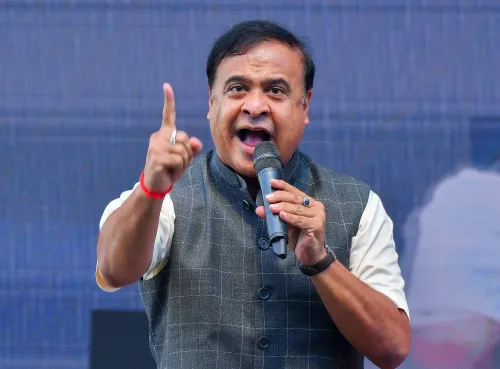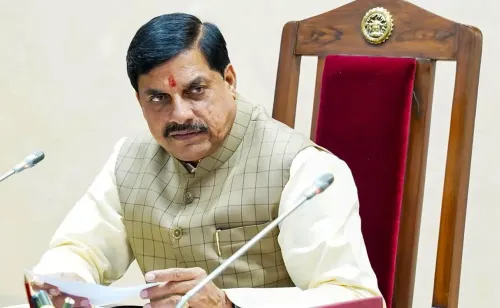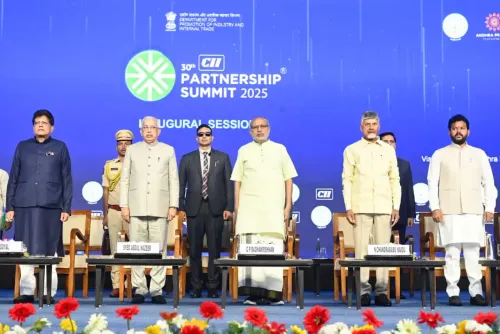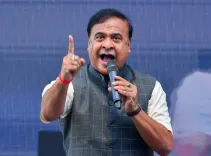Telangana Government Unveils Budget Exceeding Rs 3 Lakh Crore
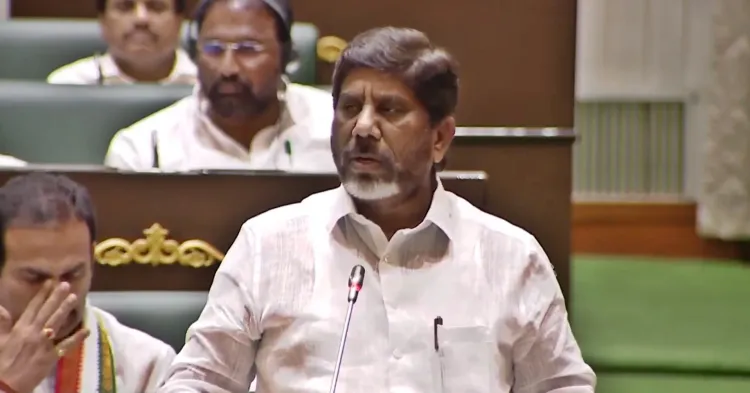
Synopsis
Key Takeaways
- Budget of Rs 3.04 lakh crore presented for 2025-26.
- GSDP growth rate at 10.1%, outpacing national average.
- Per capita income at Rs 3,79,751, highlighting strong economic progress.
- Focus on agricultural and industrial sector development.
- Proposals for tax devolution reforms presented.
Hyderabad, March 19 (NationPress) The Deputy Chief Minister and Finance Minister of Telangana, Mallu Bhatti Vikramarka, unveiled a budget amounting to Rs 3.04 lakh crore for the fiscal year 2025-26.
During the presentation of the Congress government's second comprehensive budget in the state Assembly, he estimated the total revenue and capital expenditure at Rs 2.26 lakh crore and Rs 36,504 crore, respectively.
“For the fiscal year 2025-26, I propose an overall expenditure of Rs 3,04,965 crore, which consists of Rs 2,26,982 crore in revenue expenditure and Rs 36,504 crore in capital spending,” he stated.
In July of the previous year, the Finance Minister had proposed a budget of Rs 2.91 lakh crore for 2024-25.
Telangana’s Gross State Domestic Product (GSDP) achieved a growth rate of 10.1 percent during 2024-25, outpacing the national growth rate of 9.9 percent. At current prices, Telangana’s GSDP is valued at Rs 16,12,579 crore.
The per capita income in Telangana for 2024-25 was noted as Rs 3,79,751 crore, reflecting a growth rate of 9.6 percent. “In contrast, India's per capita income stands at Rs 2,05,579, with a growth rate of 8.8 percent. This indicates that Telangana’s per capita income is 1.8 times higher, amounting to Rs 1,74,172, showcasing the state's robust economic advancement,” he elaborated.
For 2024-25, the Services Sector contributed 66.3 percent, Agriculture and allied sectors accounted for 17.3 percent, while the Industrial Sector contributed 16.4 percent to Telangana’s Gross State Value Added (GSVA).
“Government initiatives such as free electricity, Rythu Bharosa, farm loan waivers, and investments in irrigation projects have significantly bolstered farmers' morale and reinforced the agricultural sector. We are also actively promoting horticulture, animal husbandry, and aquaculture to ensure a diversified and sustainable growth trajectory for farmers,” he continued.
The industrial sector in Telangana employs 22.5 percent of the workforce. By implementing the 'China +1' strategy, the government aims to establish Telangana as a global manufacturing center in critical sectors like pharmaceuticals, biotechnology, electric vehicles, and renewable energy.
The Finance Minister expressed concerns regarding the declining share of tax devolution for Southern states, including Telangana. Under the 14th Finance Commission, Telangana received 2.437 percent of funds, which fell to 2.102 percent under the 15th Finance Commission. “Our government has argued that allocating fewer funds to well-performing states is unjust and has urged for a more equitable tax distribution that rewards states contributing significantly to national economic growth,” he remarked.
The state government has proposed reforms in horizontal tax devolution, advocating for a move away from the current 'Per Capita Income Distance' criterion. Instead, it suggests giving 50 percent weightage to GSDP to ensure a fairer allocation of resources to states that are driving national economic growth,” he stated.
Reflecting on the challenges faced by Telangana over the past decade, he mentioned that the state is currently making strides towards development.
With the 'Telangana Rising 2050 vision', the government is crafting its policies and programs to promote sustainable growth. “Our strategic plan for the next decade aims to quintuple the current $200 billion state economy, transforming it into a trillion-dollar economy,” he added.

